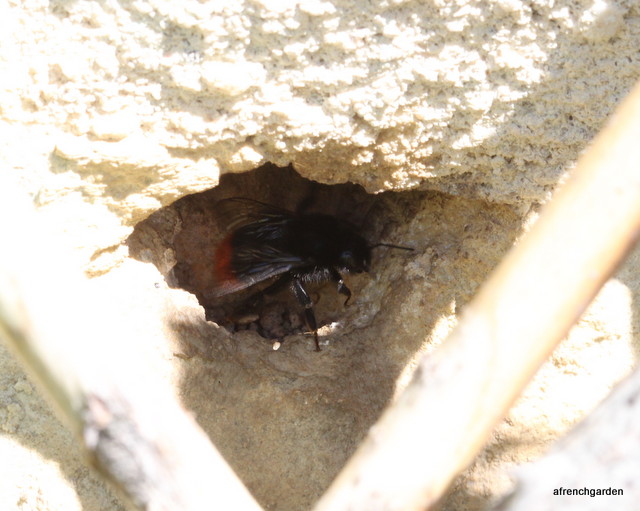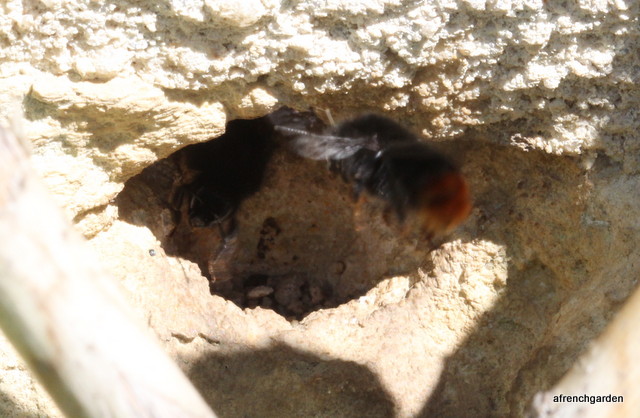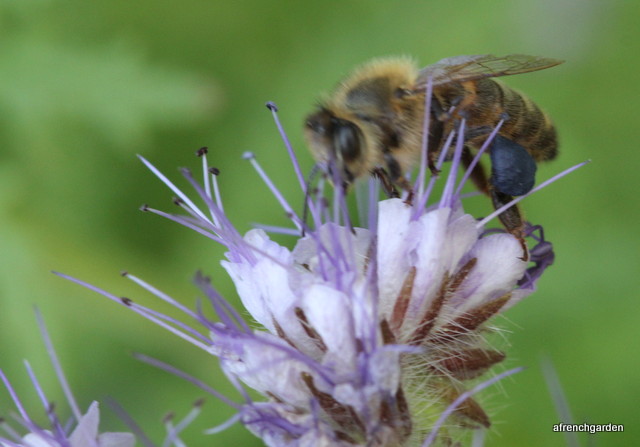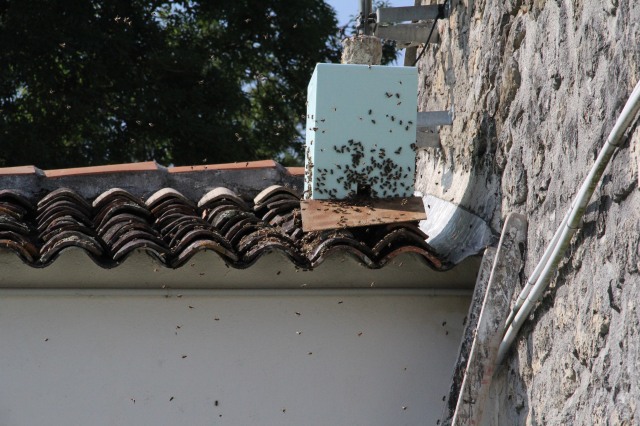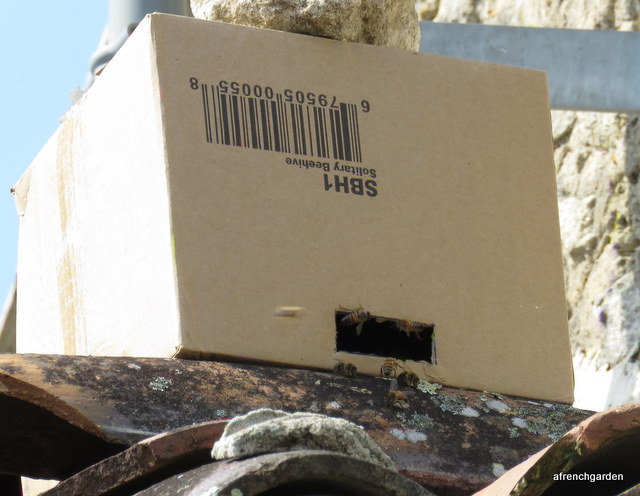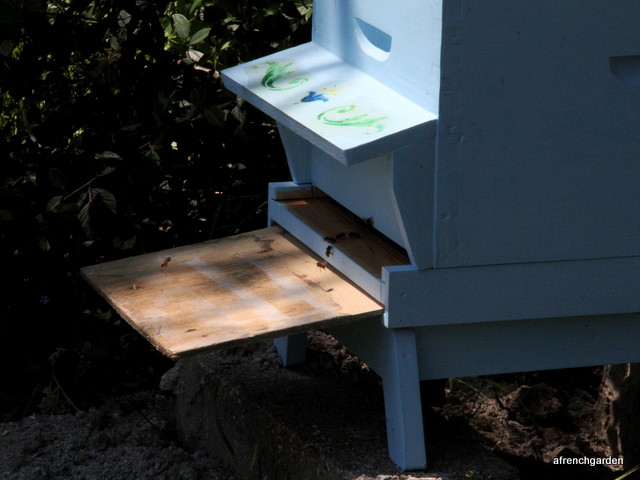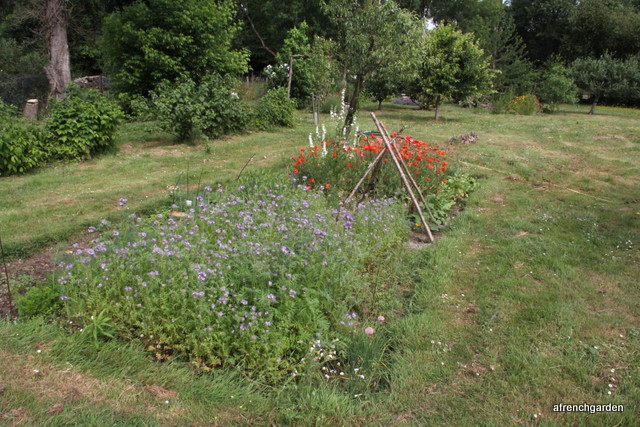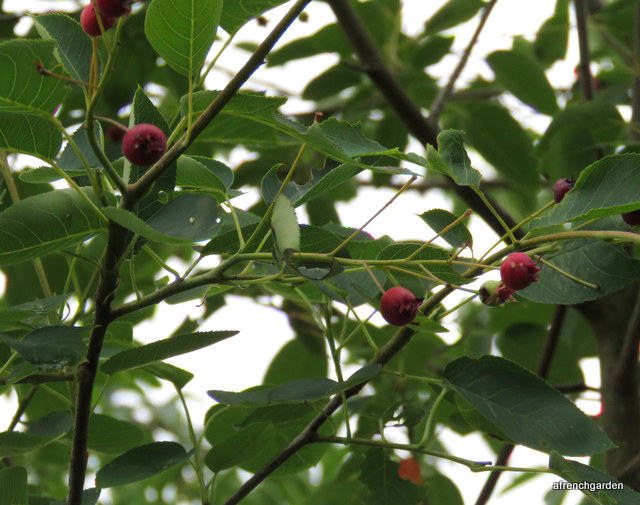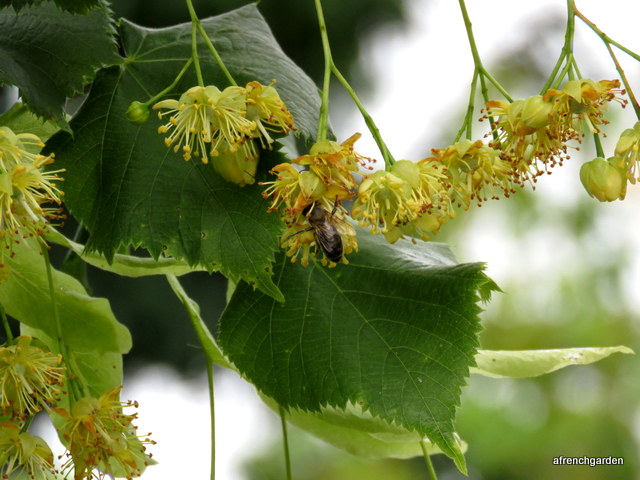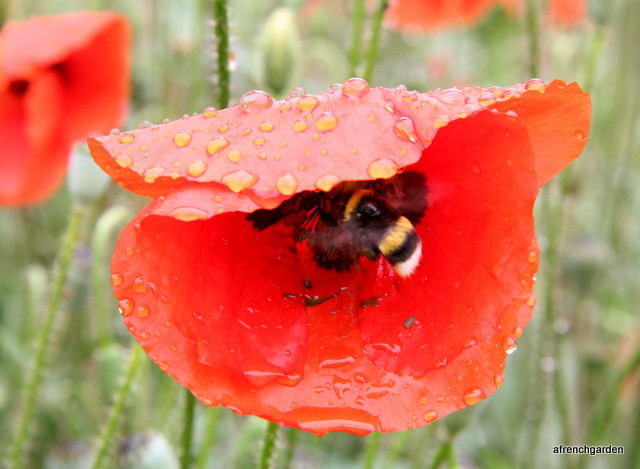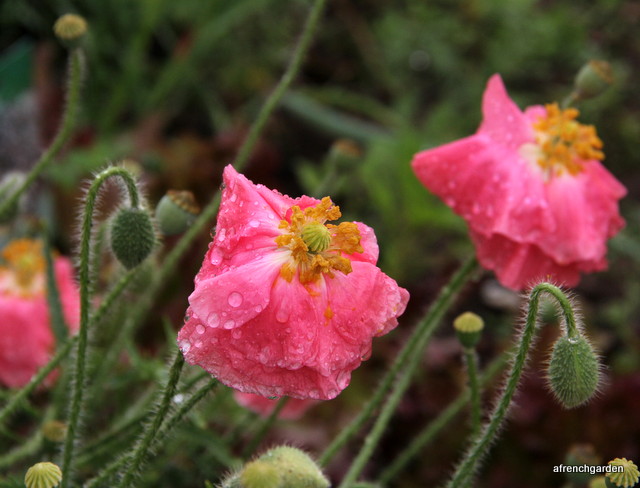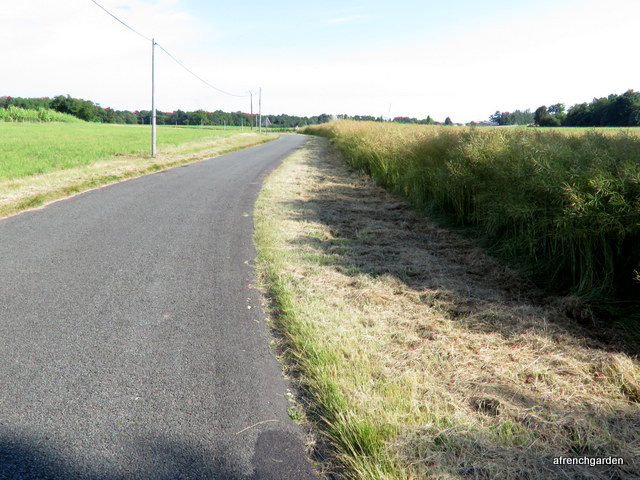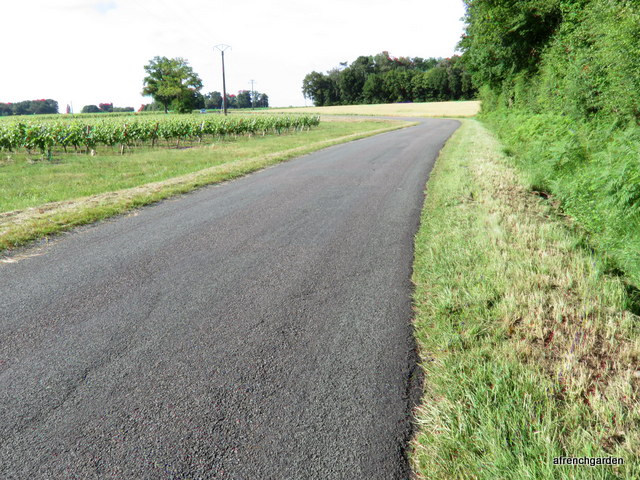We were having a coffee on the patio when my husband glanced up and said “What’s that on the rose branch?” I did not immediately see anything but then I noticed our couleuvre (Hierophis viridiflavus) draped over the branch, so I ran inside for the camera before she could slide of. I think it must be the same one as we saw in 2013 when she was still tiny, see Lodgers.
The rapid departure did not take place and I was given the task of gently prodding her with a stick. She did not budge, she was really enjoying her sunny bask. However, I persisted and eventually managed to get her to budge and she slid following the line of Madame Isaac Pereire’s branch to near the ground where she slid into a hole in the wall.
I was a bit concerned as it was the same hole being used by red tailed bumble bees (Bombus lapidarius) as a nest site. I have been keeping an eye on the nest since I saw the queen coming and going earlier in the year.
After the snake’s visit I set up my camera to watch the nest but the bees and the snake must be quite happy to share the same neighbourhood. There was plenty of coming and going with a bit of congestion at times.
It was nice to see the bumbles arriving with lots of pollen for the queen. The queen will not leave the nest now as she has hatched sufficient workers to keep her and her brood supplied with nectar and pollen to feed the new larval bees. I think the the hole must lead to the interior space between the thick old walls and provide plenty of room for all comers.
Talking about pollen – I have now forgiven the Phacelia for disappointing me with the lack of variety of pollinators compared to other flowers. Look at the colour of the pollen on the bumble bees legs!
This honey bee is going to be able to brighten up the stocks of pollen in her hive with lilac pollen too.
To be fair I do see some butterflies too, I think this one is probably a heath fritillary.
For me though, it is the poppies in the garden that steal the show these days.
I like to play “What’s your favourite poppy”. This game can be played on your own but it is better with other players. You have to decide on which poppy you think is the best. The poppy game can be continued by tying markers around your chosen poppies because after the flower passes one poppy seed head looks very much like another but with the markers the flower stems can be traced back so that you are certain to take only the seed from your chosen plant.
The “Choose the poppy” game continues on to the next year when you sow the seed and all the flowers that come up are nothing like the ones you chose the previous year. So the poppies get the last laugh, but the ones that do come up are just as astonishing and the game can be repeated for another year.
Ending on a happy note, on Wednesday we had a visit from a proud partridge. The partridges had been visiting us since last December (see Winter begins ) but recently only one of them had been coming into the garden to steal the bird food. This made us think that either one had had an accident or else might be sitting on eggs.
The chicks are very active and they were difficult to count but they have managed to raise eight although there was only one bird with them. I don’t know whether that means that the male has now left the female or if they take turns with the baby sitting.




